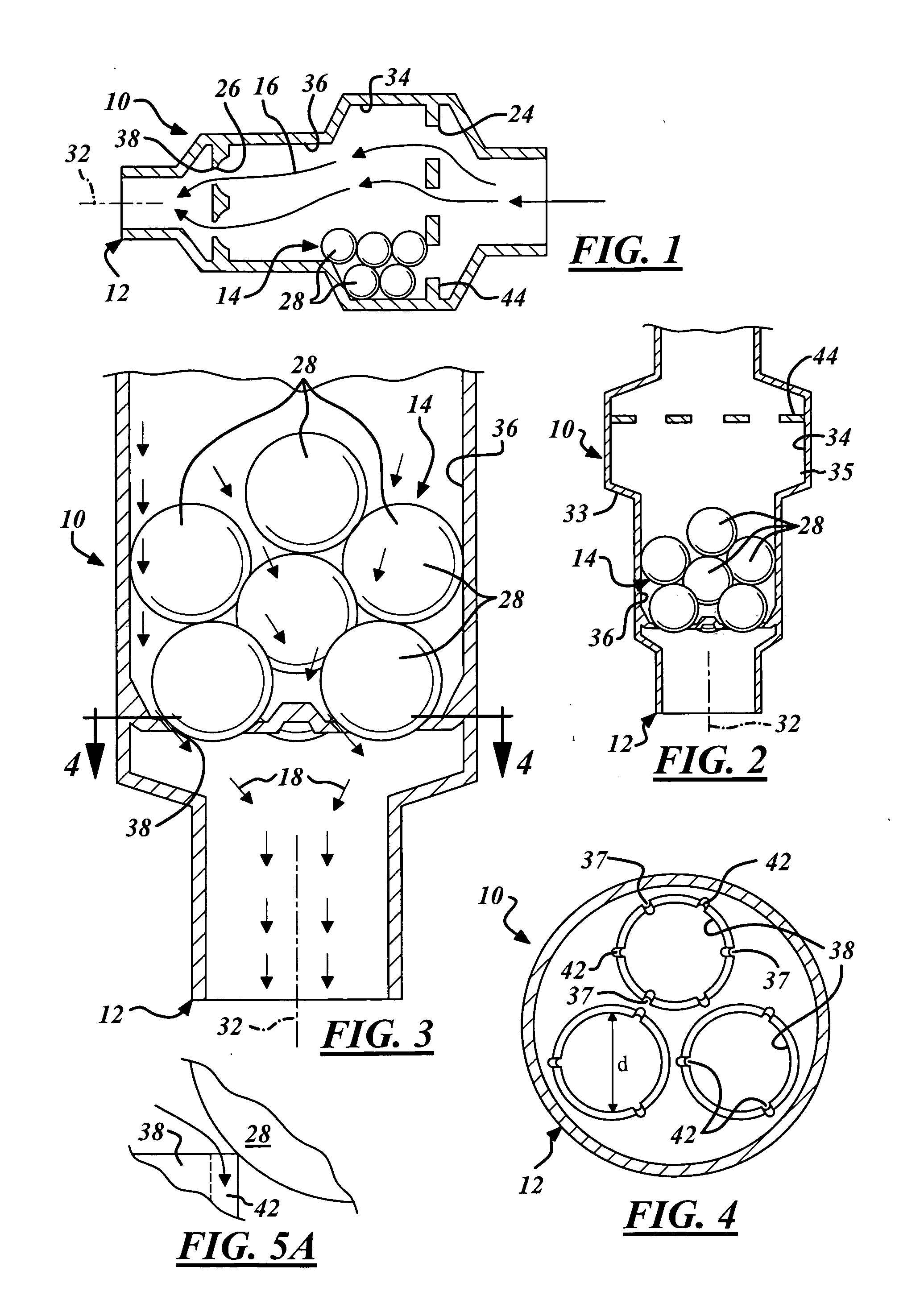Resistive shunt valve
a shunt valve and resistive technology, applied in the field of hydrocephalus, can solve the problems of csf overdrainage, headache, nausea, and most shunt designs have suffered from overdrainage tendencies, and achieve the effects of minimizing valve occlusion, preventing overdrainage of csf, and minimizing occlusion of valv
- Summary
- Abstract
- Description
- Claims
- Application Information
AI Technical Summary
Benefits of technology
Problems solved by technology
Method used
Image
Examples
Embodiment Construction
[0034] In the following figures, the same reference numerals are used to identify the same or similar components in the various representative views.
[0035] The present invention is particularly suited for a resistive shunt valve for preventing overdrainage of cerebrospinal fluid (CSF) for a hydrocephalic patient where the valve in the vertical position should not drain CSF at more than the rate of approximately 0.3-0.5 ml / min. In this regard, the embodiments described herein employ features where the context permits, e.g. when a specific result or advantage of the claimed invention is desired. However, it is contemplated that the resistive shunt valve can instead be utilized for hydraulic systems or a variety of other suitable applications. To that end, a variety of other embodiments are contemplated having different combinations of the described features, having features other than those described herein, or even lacking one or more of those features.
[0036] An embodiment of a res...
PUM
 Login to View More
Login to View More Abstract
Description
Claims
Application Information
 Login to View More
Login to View More - R&D
- Intellectual Property
- Life Sciences
- Materials
- Tech Scout
- Unparalleled Data Quality
- Higher Quality Content
- 60% Fewer Hallucinations
Browse by: Latest US Patents, China's latest patents, Technical Efficacy Thesaurus, Application Domain, Technology Topic, Popular Technical Reports.
© 2025 PatSnap. All rights reserved.Legal|Privacy policy|Modern Slavery Act Transparency Statement|Sitemap|About US| Contact US: help@patsnap.com



